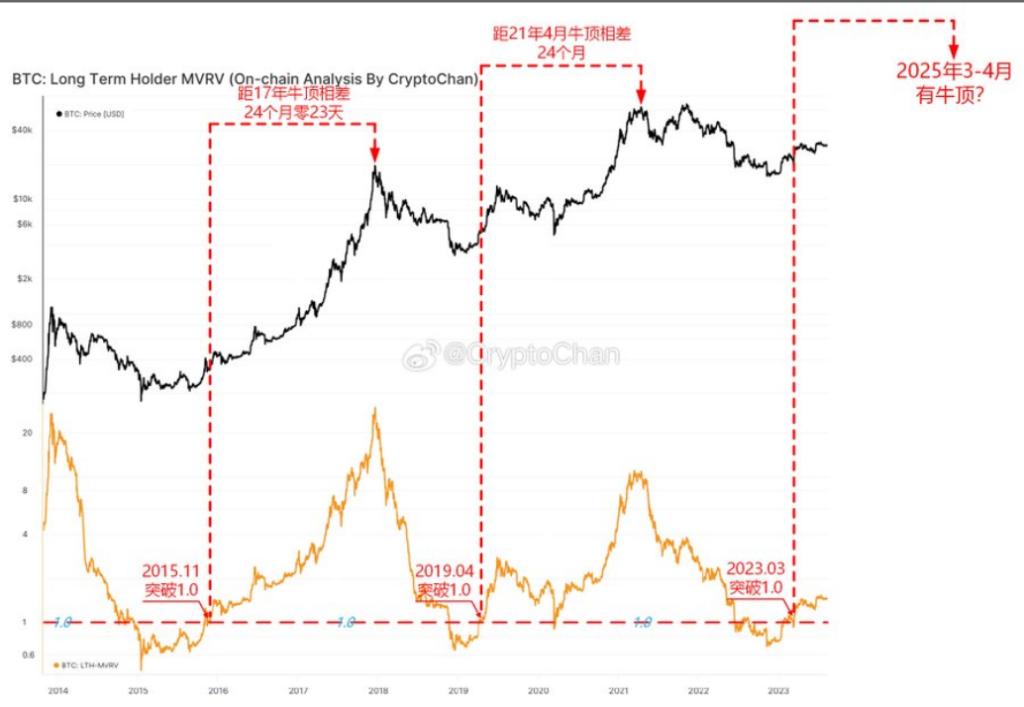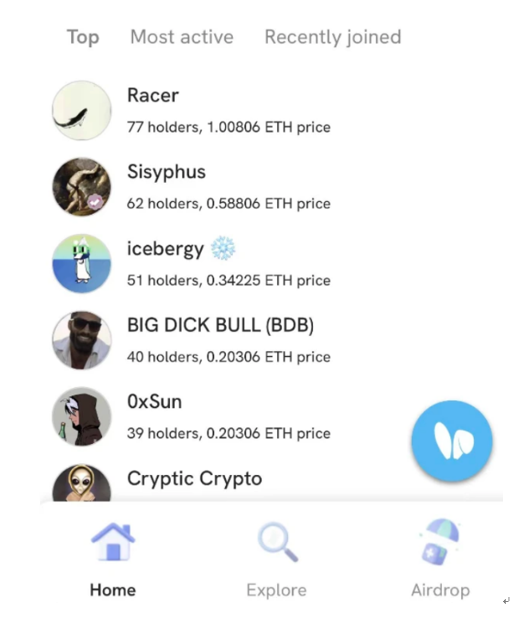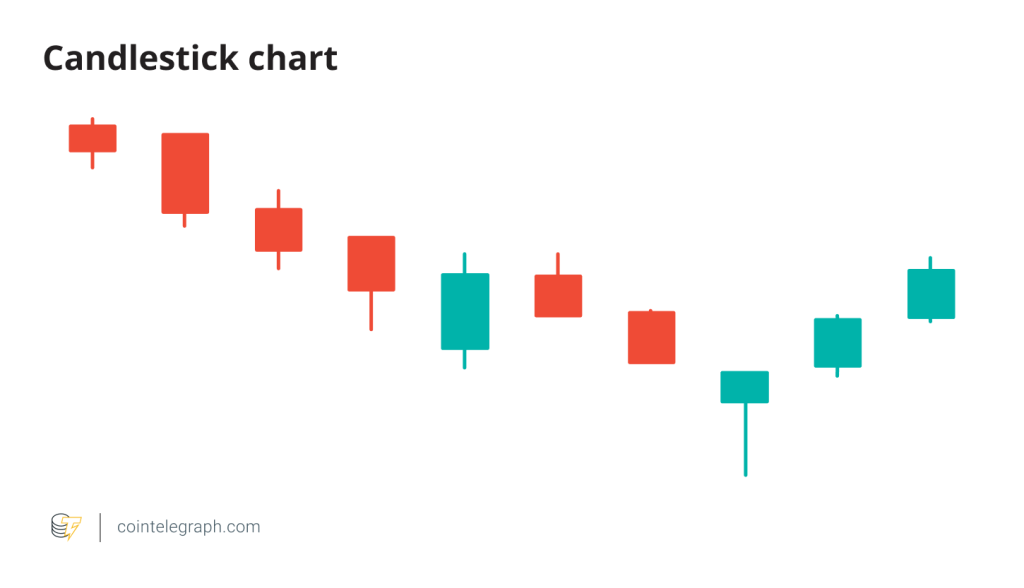Trading Strategy Part I: How to Seize Opportunities Across Cycles


There is a classic saying in the context of financial investment: "The trend is your friend." It implies that the market has cyclical changes – factors like prices, volumes, and trends tend to exhibit cyclical patterns over different timeframes. These patterns are crucial for predicting market trends and making investment decisions. In the crypto market, Bitcoin's mining rewards are halved every four years, making cyclical patterns even more evident. In this article, we will explore some of the patterns displayed by Bitcoin and introduce trading strategies to capture opportunities amid market downturns.
Exploring Bitcoin's cycle patterns from its halving effect
Since its inception in 2009, Bitcoin has experienced three halvings. The first three halvings occurred on November 28, 2012, July 10, 2016, and May 12, 2020. During these events, the block rewards were reduced from the original 50 Bitcoins per block to 25, 12.5, and 6.25 Bitcoins per block respectively. Each halving resulted in a decrease in new supply. Essentially, Bitcoin's halving events serve as a cyclical mechanism to regulate the issuance of the cryptocurrencies in the Bitcoin system through coding. Similar to the Federal Reserve's cycles of interest rate hikes and cuts, the halving events occur periodically to facilitate macroeconomic adjustments. However, there is a fundamental distinction between the two. The Federal Reserve operates within a centralized inflationary economic model, whereas Bitcoin operates on a decentralized deflationary economic model. Compared to the uncertainty in the Fed's monetary policy, Bitcoin exhibits clearer cyclical patterns. Therefore, understanding the cycles in the crypto market can be more instructive for investors. The Stock-to-Flow (S2F) model proposed by PlanB is a notable method for analyzing crypto cycles. It refers to the ratio of Bitcoin's existing stock (circulating supply) to its new flow (newly mined amount). Given that Bitcoin's prices often follow the S/F ratio, it is widely used to value Bitcoin.

Source: Glassnode
Apart from being affected by supply changes, Bitcoin's prices show cyclicity in terms of time and fluctuations. For example, based on arguments like "the larger the market cap, the smaller the price volatility," Jiang Zhuo'er analyzed Bitcoin's historical bull and bear markets to deduce critical information such as declines in a bearish sentiment and sideways periods.

Source: Jiang Zhuo'er, founder of Litecoin Pool
Examining crypto cycles from a macro perspective
Bitcoin, despite being a new financial product, has been an integral part of the U.S. financial market, given the considerable trading volumes of GBTC, BTC futures ETFs, and BTC futures contracts. As a result, the Fed's policies are making an increasing impact on Bitcoin. This primarily includes two aspects:
1. As most cryptocurrencies are priced in U.S. dollars or USD-pegged stablecoins, such as USDT and USDC, USD movements will directly cause fluctuations in crypto prices. Assuming BTC's price information remains unchanged, a weaker U.S. dollar (due to rate cuts, quantitative easing, etc.) will increase the supply of dollars, encouraging depositors to withdraw their dollars for investments in other markets. This will affect the crypto market, causing Bitcoin to strengthen against the dollar – the BTC price in USD will rise, and vice versa. For instance, since June 2019, the U.S. dollar, a global safe haven, has strengthened while BTC has seen a surge followed by a slump. At the end of 2020, the weakening U.S. dollar led to a continuous rise in BTC.
2. With BTC being increasingly viewed as a hedge against inflation, expectations or results of USD monetary policies will directly impact BTC prices. For example, after March 12, 2020, due to the Fed's unlimited quantitative easing program in response to COVID-19, a large amount of U.S. dollars were poured into the crypto market. This influx of funds drove up the BTC price and lifted the entire crypto market. Since 2021, the Fed has tightened its policy to tame inflation, leading to record highs in the U.S. Dollar Index and declines in the BTC price.

Sources: Coinmarketcap and Yahoo Finance
That said, it's worth noting that Bitcoin has a comparatively small market size, and its price movements are influenced by a mix of factors. Consequently, the BTC price is not always negatively correlated with the U.S. Dollar Index; at times, they change in the same direction. So, how do we interpret this inconsistency?
In fact, the Fed's cyclical measures act as an external influence on Bitcoin, whereas the cyclical effects stemming from its halving are more inherent. At present, intrinsic cyclicity outperforms external influence. When intrinsic cycles align with extrinsic cycles, Bitcoin's cyclical patterns become more pronounced. However, if they diverge, intrinsic cycles will prevail, albeit with a diminished impact.
Additionally, different participants in the crypto ecosystem take in varying amounts of inflowing funds. Notably, assets in upstream positions often rise before those downstream. Moreover, the preferences (perceptions and tastes) of liquidity users determine where their funds will flow. As a result, the crypto market demonstrates cyclical patterns driven by sector rotation.
How to grab opportunities amid a bearish sentiment?
Within Bitcoin's cyclical patterns, certain critical time points deserve special attention, offering investors opportunities for better preparation. Besides, we will introduce some specific operational indicators to help you choose your entry points wisely.
Historically, Bitcoin's bull markets tend to kick off after its halving events. The next halving event is projected to occur on April 26, 2024, reducing mining rewards to 3.125 BTC and new Bitcoin supply by 46%. Some analysts suggest that, since the majority of Bitcoins are in circulation, each halving reduces the new supply by almost exactly half. If history repeats itself, Bitcoin could rise to around $36,000 by the next halving, and subsequently hit around $149,000.
According to the Bitcoin MVRV ratio, the next major peak could be in sometime between March and April 2025. The 2017 peak occurred 24 months and 23 days after the MVRV ratio crossed 1.0 in November 2015, and the 2021 peak happened 24 months after the ratio surpassed 1.0 in April 2019. As the ratio crossed 1.0 again in March 2023, the next peak could be around March and April 2025. The upper indicator in the chart shows the BTC price, while the lower indicator represents the BTC long-term holder MVRV ratio. Note: MVRV (Market Value to Realized Value) is the ratio of the total market value of all held BTC to the total market value calculated based on the purchase prices of all BTC, i.e., current price to cost price.

Data source: @0xCryptoChan
Investors can also use the Ahr999 indicator for dollar-cost averaging (DCA) or buying the dip. Created by @ahr999 on Weibo, China's Twitter-like platform, the indicator aids Bitcoin DCA users in making investment decisions based on timing strategies. It implies Bitcoin's short-term DCA returns and the deviation between Bitcoin's price and expected valuation. When the Ahr999 Index is below 0.45, investors can buy the dip. When it falls within the range of 0.45 to 1.2, DCA can be a suitable strategy. However, a reading above 1.2 indicates that the price is relatively high, making it less favorable for trading.
From a long-term perspective, Bitcoin's price positively correlates with block height. Using the DCA strategy, investors can keep most of their short-term cost below the Bitcoin price.

Source: CoinGlass
Conclusion
Based on Bitcoin's halving cycles, the next major peak is expected to happen around March and April 2025. From a macro perspective, the Fed is maintaining a tightened policy stance and will likely cut rates next year. This aligns with Bitcoin's halving cycle.In the next bull market, Bitcoin is anticipated to hit around $149,000. In terms of strategies, investors can pay attention to the Ahr999 Index to help choose suitable times for buying low and making regular investments. Furthermore, following whales and using grid trading are also crucial strategies. A combination of these strategies will significantly enhance the likelihood of successful investments. We will delve into these strategies in Part II and Part III.






… [Trackback]
[…] Find More Info here to that Topic: x.superex.com/academys/deeplearning/2023/ […]
… [Trackback]
[…] Read More here on that Topic: x.superex.com/academys/deeplearning/2023/ […]
… [Trackback]
[…] Info to that Topic: x.superex.com/academys/deeplearning/2023/ […]
… [Trackback]
[…] Information on that Topic: x.superex.com/academys/deeplearning/2023/ […]
… [Trackback]
[…] There you will find 83053 more Info on that Topic: x.superex.com/academys/deeplearning/2023/ […]
… [Trackback]
[…] There you will find 15599 additional Info on that Topic: x.superex.com/academys/deeplearning/2023/ […]
… [Trackback]
[…] Read More here on that Topic: x.superex.com/academys/deeplearning/2023/ […]
… [Trackback]
[…] Read More Information here to that Topic: x.superex.com/academys/deeplearning/2023/ […]
… [Trackback]
[…] Info on that Topic: x.superex.com/academys/deeplearning/2023/ […]
… [Trackback]
[…] Find More Info here on that Topic: x.superex.com/academys/deeplearning/2023/ […]
… [Trackback]
[…] Find More on that Topic: x.superex.com/academys/deeplearning/2023/ […]
… [Trackback]
[…] Read More on to that Topic: x.superex.com/academys/deeplearning/2023/ […]
… [Trackback]
[…] Read More on to that Topic: x.superex.com/academys/deeplearning/2023/ […]
… [Trackback]
[…] Info on that Topic: x.superex.com/academys/deeplearning/2023/ […]
… [Trackback]
[…] Info to that Topic: x.superex.com/academys/deeplearning/2023/ […]
… [Trackback]
[…] Information to that Topic: x.superex.com/academys/deeplearning/2023/ […]
… [Trackback]
[…] There you can find 95251 additional Info on that Topic: x.superex.com/academys/deeplearning/2023/ […]
… [Trackback]
[…] Information on that Topic: x.superex.com/academys/deeplearning/2023/ […]
… [Trackback]
[…] Find More Information here on that Topic: x.superex.com/academys/deeplearning/2023/ […]
… [Trackback]
[…] There you will find 70843 more Information to that Topic: x.superex.com/academys/deeplearning/2023/ […]
… [Trackback]
[…] Find More on to that Topic: x.superex.com/academys/deeplearning/2023/ […]
… [Trackback]
[…] Read More Information here to that Topic: x.superex.com/academys/deeplearning/2023/ […]
… [Trackback]
[…] Find More Information here to that Topic: x.superex.com/academys/deeplearning/2023/ […]